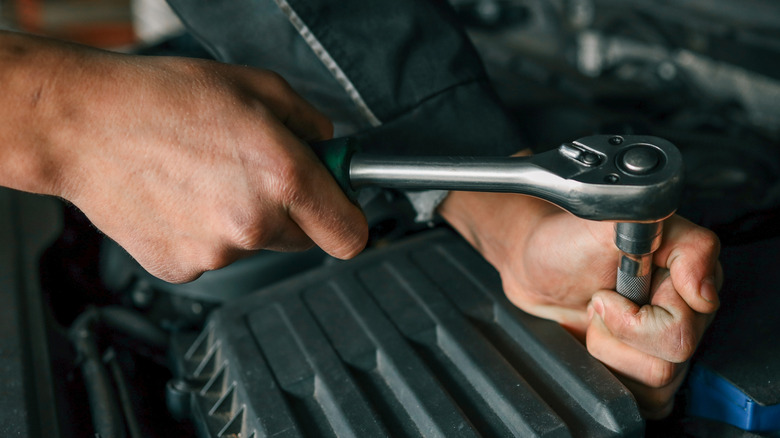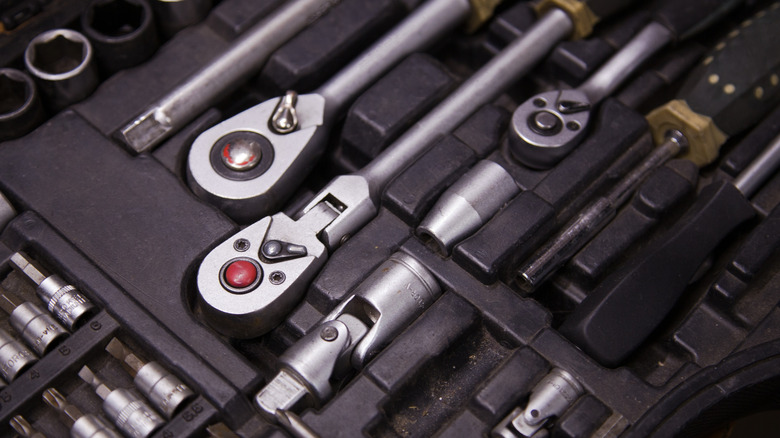How Does A Ratchet Tool Work & What Does The Teeth Count Mean?
A ratchet tool lets you loosen or tighten a bolt without needing to lift and reposition the tool with every turn, which is how it differs from a standard wrench or socket. The mechanism allows the tool to lock into place and apply force in one direction while slipping in the opposite direction. This is no new tech — in fact, the ratcheting wrench was invented way back in the 1860s.
The ratchet mechanism consists of a pawl and a toothed wheel. When you use the tool, the pawl engages with the teeth, allowing the head to rotate. However, when you pull the tool back in the opposite direction, the pawl slips over the teeth, preventing the head from turning. Most ratchets come with a direction selector, which lets you choose whether the tool applies force clockwise or counterclockwise.
Switching the selector either left or right dictates the direction of rotation for the tool. Moving the selector actuates a switch inside, which then pushes against the pawl, causing it to engage with the toothed wheel. Switching directions makes the pawl engage the opposite way, reversing which direction the wheel turns freely and which direction it locks. Unlike a standard tool, this eliminates the need to remove and flip it around when switching from undoing to fastening — instead, you just flick the switch from one direction to the next.
Here's what the tooth count on a ratchet tool means
The number of teeth on a ratchet refers to the gear inside its head-mounted mechanism. This is the drive gear, which engages with the pawl. The higher the tooth count, the less distance the handle needs to move to engage the next tooth. This is especially handy when working in tight spaces, such as on modern cars.
Tools generally range from having between 20 to 40 teeth for low-tooth ratchets, or from around 60 to 160 teeth for high-tooth models. One example is Harbor Freight's 24K gold-plated ratchet, which has 90 teeth. It is possible for toolmakers to add more than one pawl to a low-tooth ratchet, which can create a similar effect to that of a high-tooth model, at least in terms of operating precision. Some argue that ratchets with a high tooth count may be weaker than those with low-tooth versions, but failures could also be due to misuse of the tool or simply from buying low-quality tools. Whether you prefer a high- or low-tooth ratchet, it's worth noting that these tools are rather affordable, with something like this 47-piece Makita ratchet set coming in at under $25.

